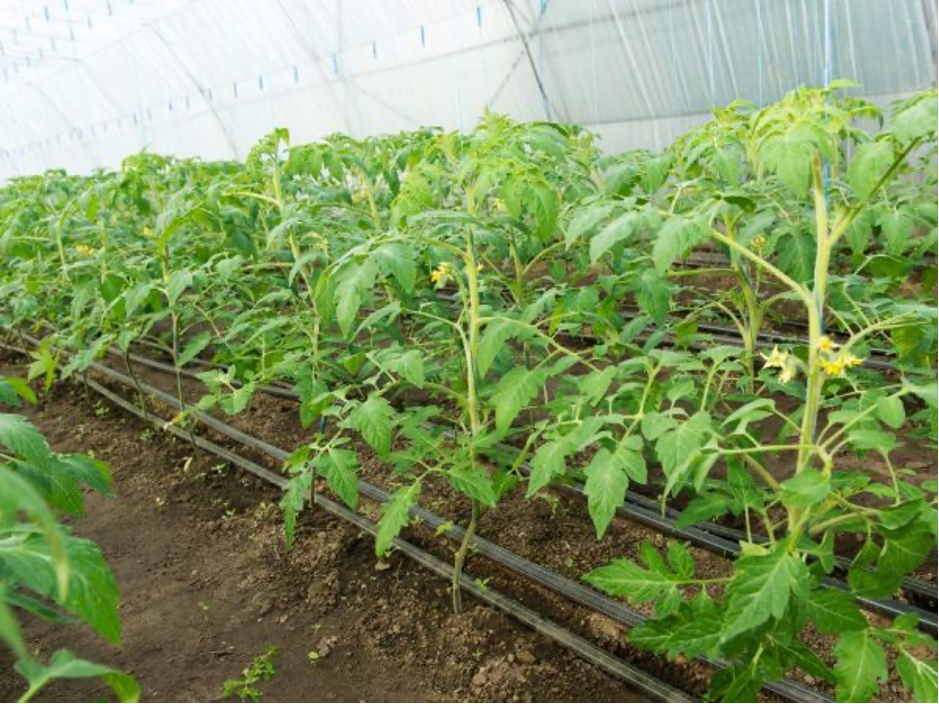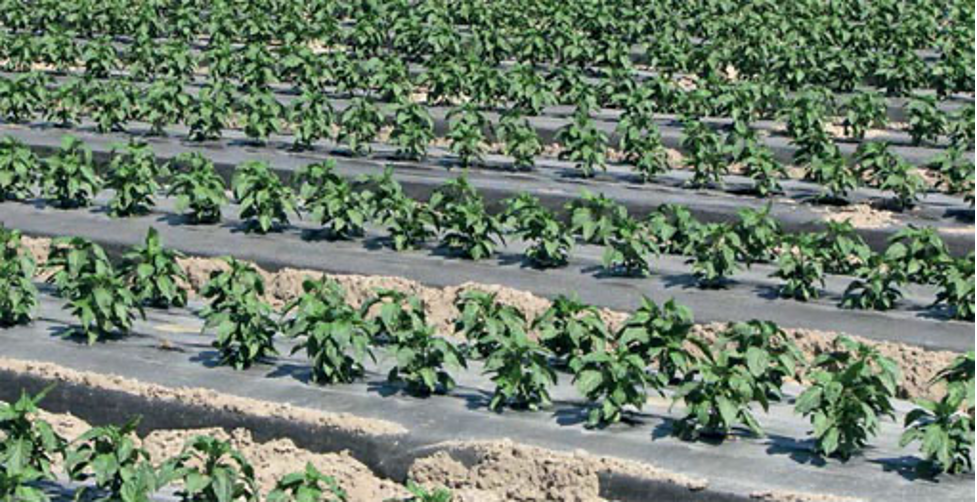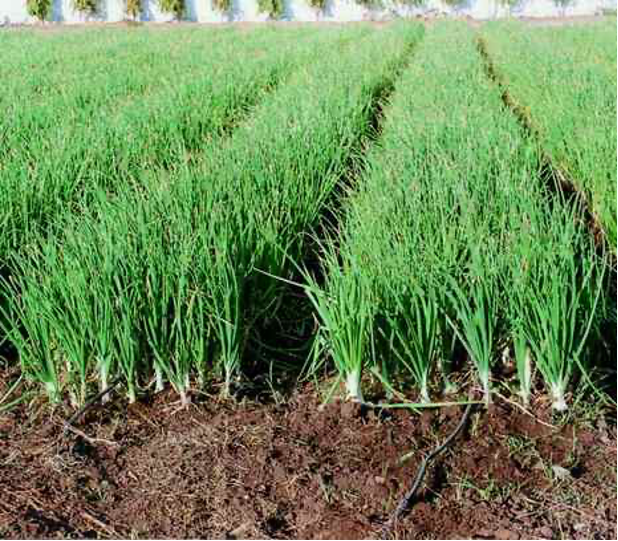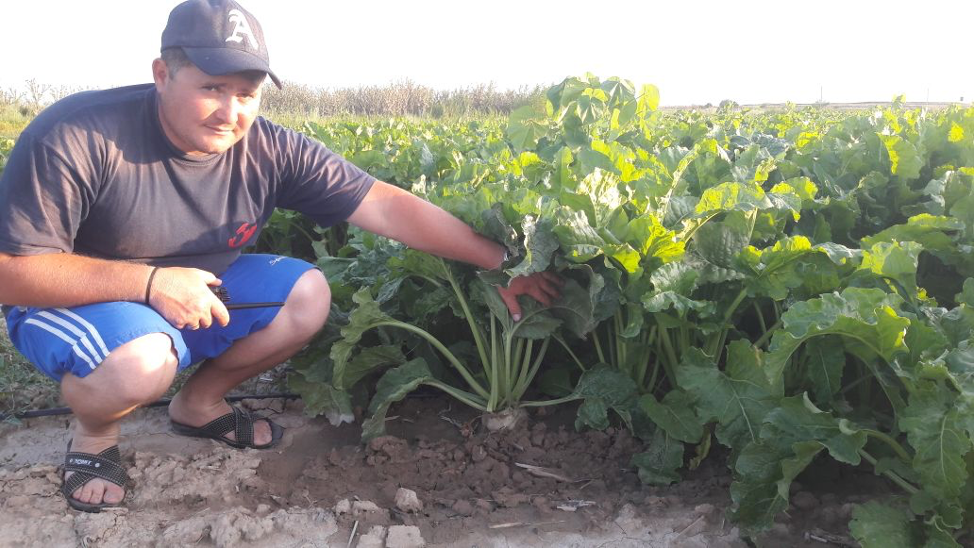We grow you more
Drip and sprinkler irrigation for intensive agriculture
Drip and sprinkler irrigation for intensive agriculture
Tomato (Lycopersicon lycopersicum) is an annual herbaceous plant of the Solanaceae family.
The stem is decumbent or erect (in standard varieties), branched, covered with glandular fibers that secrete a resinous substance of a greenish-yellow color with a specific odor.
Tomato is a heat-loving crop. Its seeds germinate at a temperature not lower than 11 ºС, and the most optimal temperature is 22-26 ºС. Studies have shown that at an average daily soil temperature of 13 ºС at a depth of 5 cm, seedlings appear 17-22 days after sowing, at 18-19 ºС - after 8-9, and at 22-26 ºС - after 3-6 days. The optimal temperature range during the growth period is 22-28 ºС, the fruit setting period is 23-26 ºС, and the ripening period is 20-28 ºС.


Pepper (Capsinum annum) is an annual plant of the Solanaceae family. During one growing season it goes through the entire development cycle - from sowing to seed ripening. The following phonological phases of plant development are distinguished: seed germination, formation of true leaves, growth of the vegetative mass, budding, flowering, technical and then biological ripeness of fruits.
Pepper is a very thermophilic plant. Seeds begin to germinate at a temperature not lower than 13ºС, but in this case seedlings appear only after 22-25 days, and sometimes germinated seeds are in the ring phase for more than 30 days; at a temperature of 14-16ºС shoots appear on the 20-22nd day; 20-25ºС - 8-10; 26-28ºС - 6-7 days. Best of all, pepper grows and develops at an air temperature of 23-27ºС.
Potato (Solanum tuberosum) is an annual, multi-stemmed herbaceous plant of the Solanaceae family that can be propagated vegetatively from tubers and seeds. For production purposes, it reproduces only vegetatively: tubers or particles with eyes (buds).
Buds located throughout the tuber in the eyes are able to grow and develop at a temperature not lower than 3-50 ºС. However, the formation of sprouts begins only at temperatures above 5-60 ºС. Potatoes are planted when the soil at a depth of 10 cm warms up to 7-80 ºС. The most favorable temperature for flowering potatoes is 18-21 ºС. At higher temperatures (27-29 ºС) flowering stops. The most favorable soil temperature for tuberization is 15-20 ºС, for early varieties 15-17 ºС. At temperatures below 6 and above 25 ºС, the growth of tubers is delayed, and at 26-29 ºС, tuberization usually stops. At higher temperatures, the number of tubers increases with a simultaneous decrease in their size.


Bulb onion (Allium cepa L.) is a two- or three-year-old monocotyledonous, cross-pollinated herbaceous plant of the Onion family (Alliaceae L.) of the genus Allium, which forms seeds in the second or third year of life, depending on growing conditions and technology, and in the first- or second-year forms new bulbs.
Onion is a cold-resistant plant. Seed germination begins at a temperature of 2-5°C. The optimum temperature for onion growth should not exceed 25°C. The best formation and maturation of bulbs occurs when the sum of effective temperatures (above 10°C) from mass shoots to harvesting is at least 510-540°C.
The optimum air humidity for onions is 60-70%.
Corn (Zea mays L.) originated in the countries of Central America (in the Ands region).
In world production, corn is the third most important cereal after rice and wheat, consumed by humans and animals and grown for grain and consumption. At present, world production is about 687.2 million tons of grain on 145 million hectares of land. Demand for corn is rising - for both fresh and processed products - and the decrease in land available for expansion means that yields themselves must be increased.
Corn belongs to the grass family, Cereals. Germination of corn occurs in the soil. The seedling emerges from the soil 6-10 days after sowing and soon stops growing. The stem consists of moving nodes and internodes. Several nodes and internodes remain condensed underground to form a wreath. Under favorable conditions, the internodes extend into a trunk 2.5 m or more long.
Grown in climates ranging from temperate to tropical during the period when the average daily temperature is above 15 ° C in the absence of frost. For germination, the lowest average daily temperature should not fall below 10 °C, the temperatures range of 18 to 20 °C is optimal. The suitable temperature for growth varies with the time of day and also throughout the growing season, for example, during daylight hours, the optimal temperature range is from 25°C to 33°C, while at night the temperature ranges between 17°C and 23 °C. However, the most suitable average temperature for the entire growing season of crops is in the range of 20°C - 22°C.
Corn grows well in most types of soil: sandy loam, loam, silty loam, etc., to a lesser extent in very heavy dense clay and excessively sandy soil. Corn thrives on deep, well-drained clay and silty loam, with an adequate amount of available organic matter and nutrients. It is desirable that the soil is well aerated and also drained, as the crop is very susceptible to waterlogging. The ideal soil pH is between 7.5 and 8.5.
The introduction of drip fertigation in corn is technically feasible, economically viable and beneficial in many ways:
1. Frequent daily watering keeps the soil water in the root zone high.
2. Uniform emergence of seedlings and their rapid growth.





Beet (Beta vulgaris var.conditiva) is a biennial plant from the Lebedovye (Marevye) family. In the first year of life, plants form a leaf rosette and a root crop, and in the second, a flower-bearing stem, on which flowers and seeds are formed. The plant is cross-pollinated, long day. The productive organ is the root crop.
Table beet belongs to cold-resistant plants, but it is more demanding of heat compared to other root crops.
The most favorable temperature for the growth of root crops, and, consequently, for obtaining the greatest yield, is 15-23 ° C. However, obtaining a high yield is possible at higher temperatures.
The table beet maintains the increased concentration of salts in soil solution. It ranks first among vegetable crops in terms of salt tolerance. The threshold value of this indicator for table beet is 4.0 dS/m (for comparison, carrots 1.0, potatoes 1.7 dS/m).
Table beet plants react negatively to increased soil acidity. Optimal for the crop is pH 6-7. At 5 or less, seedlings appear slowly and thin out, plant growth is greatly inhibited. Therefore, on soils with high acidity, it is necessary to carry out liming.
Of all the root crops, beetroot is the most demanding on soil fertility. High yields of beets can be obtained if the required amount of fertilizer is applied in an easily digestible form. Beetroot can be cultivated on any type of soil. The exception is acidic, heavy soils with a high occurrence of groundwater. The best soils are nutrient-rich loams, sandy loams and especially loamy black soils with a finely cloddy structure.